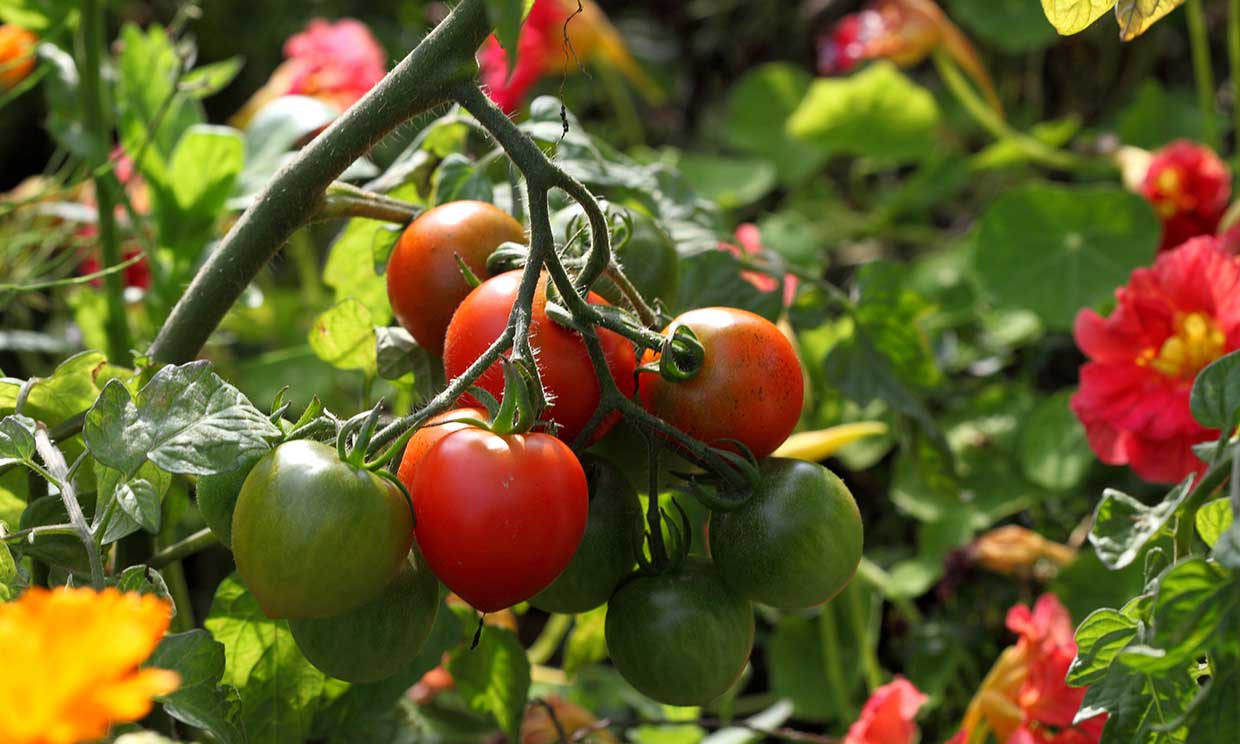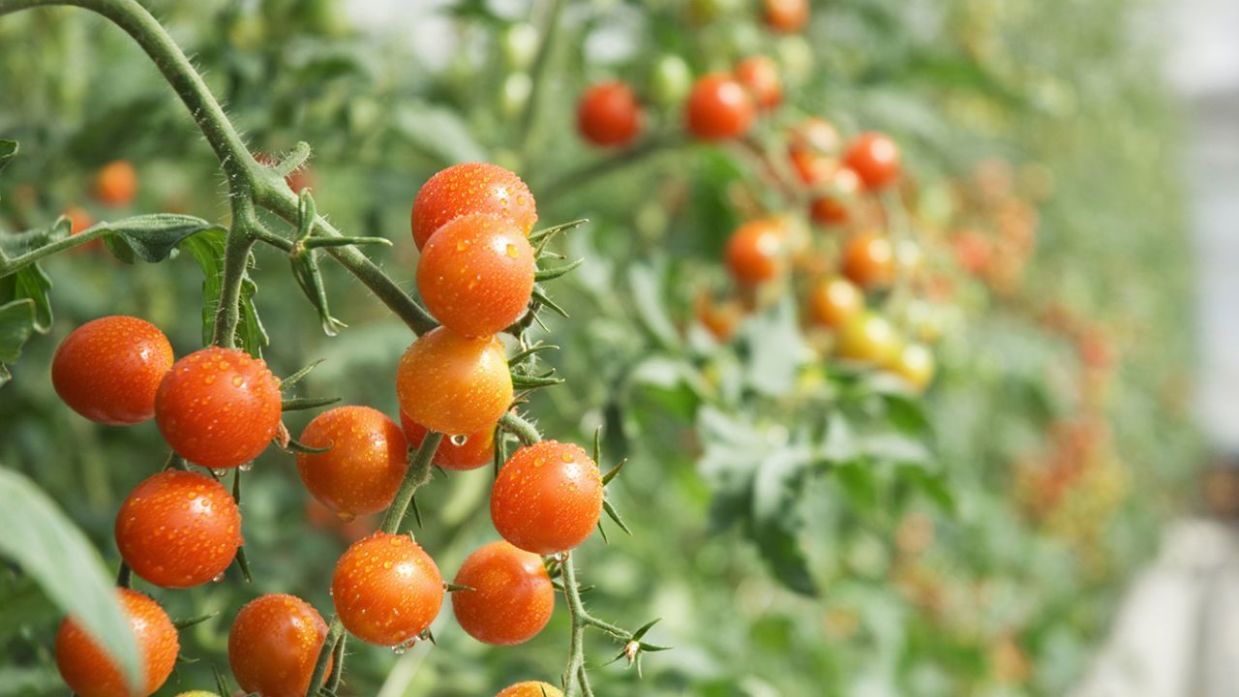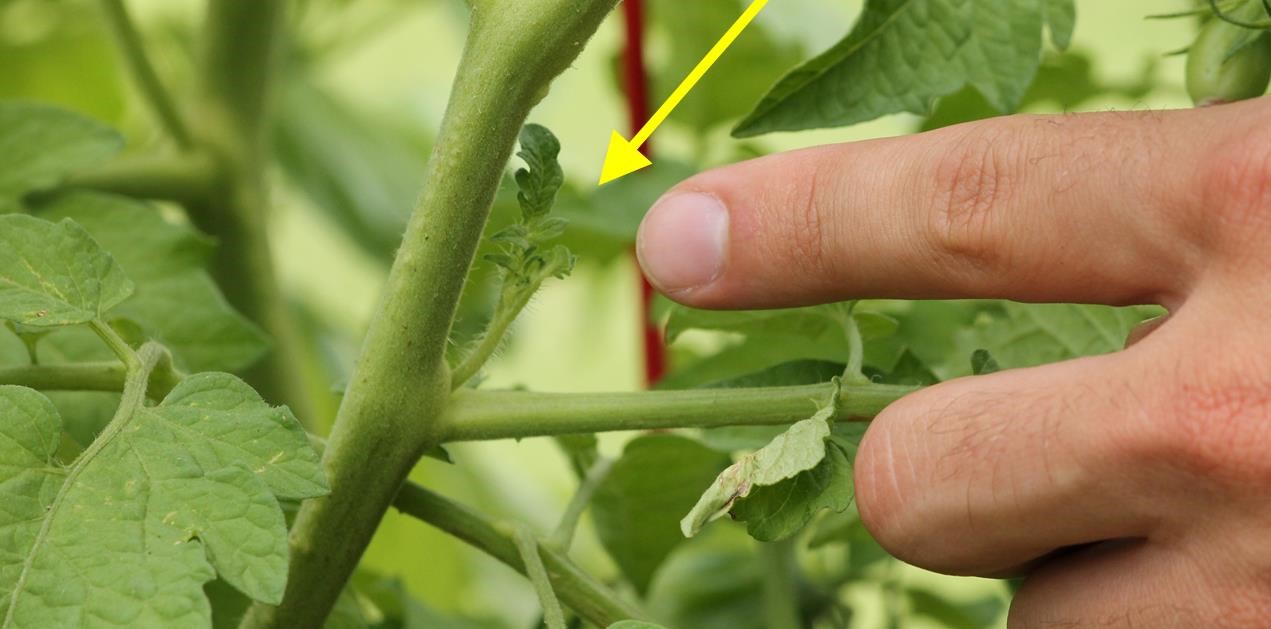Different pruning must be done to a tomato plant because there are several parts that need to be removed in due time. This post will explain in detail how prune tomatoes correctly, in addition to some characteristics of the plant, as well as the basic care it requires.

Tomato
This plant has the scientific name Solanum lycopersicum, although its common denomination is tomato or tomato. It is part of the genus solanum, which in turn is within the family Solanaceae, of the order solanales and of the class Magnoliopside.
It is very popular because its fruit has various culinary uses, in addition to being distributed throughout much of the world. They originally come from Central and South America (to the north) and it was in the regions of South America that the tomato began to be used as food, approximately 2600 years ago.
The tomato is a plant that grows in those places where the climate is a little warm, the ideal temperatures for it to grow correctly are 24 to 25 C° during the day and 15 to 18 C° when it is night, although It is recommended that the temperature be maintained at around 21 C° so that its flowering is abundant and healthy. It is cultivated mainly in Brazil, China, Egypt, Spain, the United States, India, Iran, Italy, Mexico, Turkey and other countries.
These are plants that can be classified within those that are resistant to heat, since when the temperature drops below 8 C° they can be affected by stopping growing or presenting a coloration in their leaves. As for the light, they can grow very well when they are in places with a lot of light and they really do not need large amounts of water, the excess can weaken them, leaving them to get sick in various ways, later the care that tomato plants require will be explained in detail. .
Features
The characteristics of this plant will be listed below:
- Firstly, the stem is cylindrical in shape, it remains upright although tubes are placed next to it so that it does not fall.
- The size they can reach varies, although the average is almost 3 meters, however the record for the largest tomato plant that has ever existed describes it as being 19,8 meters long (it was grown at Nutriculture Ltd. in the UK). United in 2000). While its roots can reach up to a meter and a half deep.
- It has hairs in almost all its parts, which is quite a lot considering that it is a plant with abundant branches.
- Several knots without any pattern can be seen on the leaves, their underside can be a little gray and their face is green.
- Its flowers are hermaphrodite and can be formed by a not very long peduncle, as for its structure, they have five or six petals that are yellow.
- As for its fruit, this is a berry that can be yellow, orange or red, depending on the Types of tomato with sizes that vary and range from 3 centimeters in diameter to 16 centimeters. The record for the largest and heaviest tomato was held by one that weighed 3,51 kilos, which was grown in 1986 at the Delicious farm in Oklahoma.
- The seeds can be gray or straw-colored with various shades, they are found inside the tomatoes and can measure from 3 to 5 millimeters in diameter and a little more than 2 millimeters in length. These also have villi and are covered with a slightly viscous vegetable substance, which would be the mucilaginous mass of the fruit.
PREMIUM QUALITY
It is important to know the types of tomato plants because by identifying which one you have, you will be able to prune tomatoes correctly, since each type of plant requires specific care.
- indeterminate tomato plants
This first type is the one that grows without stopping and its tomatoes are produced in a staggered manner throughout its season, these are the ones that require pruning of their suckers to control that the plant focuses more on developing its fruits well than on grow more and more.
Only with constant pruning is it possible to obtain good quality tomatoes, perfect to be consumed at home or marketed. Black cherry, lots of honey, and beefsteak tomatoes are just a few of those that fall under the indeterminate classification. They are of this type because their bud is vegetative, therefore growth is called indeterminate.
- determinate tomato plants
As for the determinate tomato plants, these show reproductive buds, the growth is called «determined» because when they are mature they already stop growing, in addition to the fact that the tomatoes are developed at the same time. These tomato plants are more of a bushy type and compact in shape, requiring them to be harvested much faster than tomato plants.
Even so, these fruits do not require as much care in reference to pruning because they do not produce as many suckers as indeterminate tomato plants. Cherry gold nugget tomatoes and roma tomatoes are some that fall into this classification.
Basic care
If you want to have this plant at home, you must take into account some points about its care, it really is not a plant that requires too much attention, but to obtain good tomatoes it will be necessary to take care of the conditions so that it can grow in a healthy way and does not suffer from any of the Tomato diseases.
Lighting and temperature
These are not shade plants, they really require good lighting so that they can grow, develop, pollinate and their fruits can ripen correctly.
The ideal temperature has been mentioned above, however, the range between one degree and another can be opened a little more, in this sense, to grow tomato plants, they must be kept in an environment where the daytime temperature varies between 20 and 30 C°, while at night they will remain healthy if the temperature goes from 10 to 17 C°.
As mentioned, when the temperature is less than 8 C° the plant will stop growing and will not fertilize either, if it is higher than 35 C° the growth will also be affected, not only of the tomato plant in general but of the fruit, in addition fertilization will not occur.
Earth
The substrate is not really something that can be very specific for this plant, they only need the soil where they will be planted to have good drainage, those loose sandy or clayey substrates that have enough organic matter will be ideal for them to grow without problems. If you can take care that they are a little acid much better. It is important that they are not planted near the walnut trees, since this reduces their size considerably.
Irrigation
It will be necessary to keep these plants watered to avoid seeing cracks in the tomatoes or pollination not taking place correctly, as a percentage it could be said that the humidity it needs is between 60% and 80%.
Pruning
First of all, it is important to keep in mind that pruning is not done after watering the plant, so it must be dry to prevent it from getting sick or infected when you finish pruning tomatoes.
With that understood, before knowing how to prune tomatoes it will be necessary to know when to do it, there are several types of pruning for this plant and each of them is done at certain times, for example: the shoots should be pruned only during the warm months , watering can be done once or twice every week. When the tomato plant is indeterminate, it will be seen how many new shoots will begin to emerge as soon as spring begins, these should be removed when they are small.
The leaves will need to be pruned regularly, these parts require more maintenance because they will wilt or show damage. While the apical shoots should be cut when there are about three months left for the cold months season or when there is a month left for the arrival of the warm months in which the hottest degrees are seen.
How are tomato plants pruned?
In principle, it should be remembered that the materials used for prune tomato plants They must be properly sterilized.
Outbreaks
As stated above, tomato plants that have an indeterminate type of growth require their shoots to be pruned more regularly, this procedure is called debudding when pruning tomatoes and will be necessary approximately 15 to 20 days after the tomato plants are transplanted.
In the event that the pruning is not done, the shoots or suckers will grow and branches as large as the original ones will emerge and thus the plant will grow and its fruits will not grow correctly. This is because the energy is used to grow and not to distribute the necessary resources for the tomatoes to grow correctly, in this way those that will grow will do so with a small size and in few quantities.
Suckers are found mostly at the junction between the main stem and secondary branches, which is called the "axil." As soon as they can be grabbed, these suckers should be cut, weekly or several times a week if they grow too many, this can be during the summer.
Small shoots can be removed with your hands, those that are already very large can be cut with a razor or a sharp and sterilized knife. Avoid making a tear (which happens when trying to cut very large shoots) because bacteria can enter there that will make the plant sick.
Leaves and flowers
When pruning tomatoes, the leaves should be cut with sterilized scissors when they are yellow, withered, damaged or old, at this time it will be necessary to remove them little by little, many at the same time can weaken the plant too much. As for the old leaves, these can be found near the ground or on the branches of the fruits.
apical buds
As for apical shoots or the tip of the stems, these should be cut when it is considered that the plant will no longer produce a new number of tomatoes in its season, at that time it will be necessary to cut them so that the tomatoes that are already forming do correctly and grow more.
This procedure called trimming tomatoes is done by leaving one or two branches on the flower cluster that is at a higher height. This should be done in all harvest seasons, with all the main stems at their highest.



